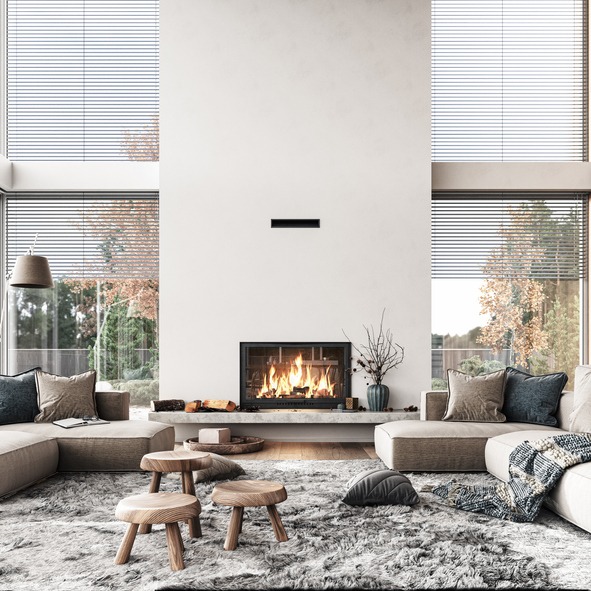Tips for Saving Money and Reducing Energy Consumption
Fireplaces have long been cherished for their ability to create a warm and inviting atmosphere in our homes, especially during the chilly Canadian winters. However, traditional fireplaces can be notorious for their inefficiency, leading to wasted energy and higher utility bills. As homeowners increasingly prioritize sustainability and cost-effectiveness, the need for efficient fireplaces becomes more evident. In this guide, we will explore valuable tips to make your fireplaces more efficient, enabling you to enjoy the comforting glow of a fire without draining your resources.
1. Inspect and Maintain Your Fireplaces Regularly
The first step to enhancing the efficiency of your fireplaces is to ensure they are well-maintained. Regular inspections by a professional chimney sweep will help identify any potential issues such as creosote buildup, blockages, or damaged components that could impede proper airflow. By addressing these problems promptly, you can optimize your fireplace’s performance and prevent energy wastage.
2. Upgrade to an Energy-Efficient Fireplace
If you have an older, traditional fireplace, consider upgrading to a more energy-efficient model. Modern fireplaces, such as gas or electric ones, offer greater control over heat output and reduce energy loss. Gas fireplaces, in particular, can be highly efficient, with many models equipped with programmable thermostats and remote controls for easy management.
3. Install a Fireplace Insert
For homeowners with existing masonry fireplaces, installing a fireplace insert can significantly improve efficiency. A fireplace insert is a self-contained unit that fits into the existing fireplace, transforming it into a high-efficiency heating source. These inserts are designed to burn fuel, such as wood or pellets, more efficiently, while also radiating heat effectively into the room.
4. Seal Leaks and Insulate
Just like windows and doors, fireplaces can be a source of drafts if not properly sealed. Check for any gaps or leaks around the fireplace, chimney, or flue and seal them with appropriate materials. Additionally, consider insulating the walls around the fireplace to prevent heat from escaping into unused areas of your home.
5. Use Seasoned Firewood
If you have a wood-burning fireplace, the type of firewood you use can greatly impact its efficiency. Seasoned firewood, which has been dried for at least six months, burns more efficiently and produces less smoke compared to green or unseasoned wood. Using dry firewood will not only provide more heat but also reduce creosote buildup in your chimney, improving safety and preventing potential hazards.
6. Practice Zone Heating
Rather than trying to heat your entire home with the fireplace, consider implementing zone heating. This involves heating the rooms you use most frequently while keeping the rest of the house at a lower temperature. Zone heating can be achieved by using a fireplace insert or by installing a fan system to circulate warm air more effectively.
7. Invest in Fireplace Doors and Heatproof Glass
Adding glass doors to your fireplace can enhance its efficiency by preventing heat loss when the fireplace is not in use. The doors act as a barrier between the indoor air and the chimney, reducing drafts and keeping warm air inside. Additionally, consider upgrading to heatproof glass, which can withstand higher temperatures and provide better insulation.
8. Close the Damper When Not in Use
A simple yet effective tip to conserve energy is to close the damper when your fireplace is not in use. The damper is a movable plate inside the chimney that controls airflow. Keeping it closed when the fireplace is not in operation prevents warm air from escaping and cold air from entering your living space.
9. Consider Eco-Friendly Alternatives
For those who want to enjoy the ambiance of a fireplace without burning traditional fuels, consider eco-friendly alternatives. Electric fireplaces and ethanol fireplaces are both cleaner-burning options that produce no smoke or harmful emissions. These choices are also more energy-efficient and require minimal maintenance.
10. Use Ceiling Fans Wisely
If you have ceiling fans in the room with the fireplace, use them strategically. In the winter, run the fans in reverse mode (clockwise) on low speed to help push warm air down from the ceiling and distribute it throughout the room. This can help maintain a more consistent temperature and reduce your reliance on the fireplace for heating.
Upgrading Your Fireplace Energy Efficiency
In conclusion, making your fireplaces more efficient is not only beneficial for the environment but also for your wallet. By following these practical tips, you can enjoy the warmth and comfort of your fireplaces during the cold Canadian winters without worrying about excessive energy consumption or utility bills. From regular maintenance to utilizing modern technologies, these strategies empower homeowners to create a cozy and sustainable living space that aligns with their values and contributes to a greener future.
